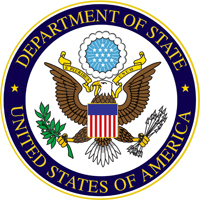
Reissued after periodic review with minor edits.
Reconsider travel to Papua New Guinea due to crime, civil unrest, and piracy. Exercise increased caution due to kidnapping, unexploded ordnance, inconsistent availability of healthcare services, and potential for natural disasters. Some areas have increased risk. Read the entire Travel Advisory.
Do not travel to:
- Central Bougainville, particularly areas near the Panguna mine, due to civil unrest.
- The Highlands region, other than the towns of Mt. Hagen and Goroka, due to civil unrest.
Country Summary: Violent crime, including sexual assault, carjackings, home invasions, and armed robberies, is common. There have been reports of criminals attacking resorts popular with foreign tourists to steal goods and money. Tensions between communal or tribal groups may lead to civil unrest involving violence and can occur without warning. Police presence is limited outside of the capital, Port Moresby, and police may be unable to assist due to limited resources. The U.S. government has limited ability to provide emergency services to U.S. citizens outside of Port Moresby due to limited transportation infrastructure. U.S. government employees must obtain authorization before traveling to areas of concern, including the central part of Bougainville and the provinces of Southern Highlands, Western Highlands (excluding Mt. Hagen), Eastern Highlands (excluding Goroka), Hela, Enga, Jiwaka, and other areas of Papua New Guinea where one is unable to fly directly.
Piracy is active in the waters surrounding Papua New Guinea. Travelers by boat should reconsider travel to the Bismarck and Solomon Seas along Papua New Guinea’s north and eastern coasts. In 2021 and 2022, the Embassy was aware of at least three occasions in which sailboats operated by or carrying U.S. citizens were boarded by criminals. The criminals, who have been known to use physical violence, robbed the boats, and in one incident, severely injured the captain when he attempted to fight back.
Visit our website on International Maritime Piracy and Armed Robbery at Sea.
Kidnapping for ransom or political influence occurs in Papua New Guinea, though foreign nationals are not frequently targeted. In February 2023, a foreign citizen was kidnapped. In late 2022, foreign citizens employed by an international company were kidnapped and held for several days.
Travelers should exercise increased caution when traveling in remote areas of Papua New Guinea due to the presence of unexploded ordnance (UXO) remaining from World War II. UXO is discovered infrequently throughout the country, often on smaller islands.
Papua New Guinea has inconsistent availability of healthcare services which may be difficult to obtain outside of Port Moresby. Pharmaceuticals may be scarce or unavailable.
Papua New Guinea is subject to periodic seismic activity and is home to several active volcanoes. The country does experience regular volcanic eruptions, earthquakes, and tsunamis. U.S. citizens are advised to familiarize themselves with volcano updates, earthquake tracking, and tsunami warnings in Papua New Guinea. U.S. citizens should develop contingency plans in the event of an eruption or major earthquake.
Read the country information page for additional information on travel to Papua New Guinea.
If you decide to travel to Papua New Guinea:
- Do not use local taxis or buses, known as public motor vehicles or PMVs.
- Travel with guides from a reputable tour company, particularly if you plan to hike.
- Avoid walking or driving at night.
- Avoid areas in the vicinity of active volcanoes.
- Do not physically resist any robbery attempt.
- Avoid demonstrations and crowds.
- Do not touch unknown metal objects and avoid traveling off well-used roads, tracks, and paths due to risk of unexploded ordnance.
- Bring a sufficient supply of over-the-counter and prescription medicines.
- Avoid sailing around the waters of Papua New Guinea and review the Live Piracy Report published by the International Maritime Bureau.
- If sailing, have functioning communication and emergency equipment, such as a satellite phone, VHF radio, and emergency position indicating radio beacons (EPIRB).
- Review Travel.State.Gov’s Crisis Abroad: be ready page.
- Review volcano updates, earthquake tracking, and tsunami warnings.
- Review the CDC’s suggestions on preparing for natural disasters.
- Enroll in the Smart Traveler Enrollment Program (STEP) to receive Alerts and make it easier to assist you in an emergency.
- Follow the Department of State on Facebook and Twitter.
- Follow Embassy Port Moresby, Papua New Guinea on Facebook and Twitter.
- Review the Country Security Report for the Papua New Guinea.
- Visit the CDC page for the latest Travel Health Information related to your travel.
- Prepare a contingency plan for emergency situations. Review the Traveler’s Checklist.
Areas Near the Panguna Mine on the island of Bougainville – Level 4: Do Not Travel
The Autonomous Bougainville Government has designated areas near the Panguna mine as “no go zones” due to the risk of violence from civil unrest. Bougainville police lack the resources to respond to emergency calls.
Visit our website for Travel to High-Risk Areas.
The Highlands Region (excluding Mt. Hagen and Goroka) – Level 4: Do Not Travel
There is a heightened risk of civil unrest from tribal violence throughout the region, including the provinces of Southern Highlands, Western Highlands, Eastern Highlands, Hela, Enga, and Jiwaka. The towns of Mt. Hagen (Western Highlands) and Goroka (Eastern Highlands) generally have a more stable police presence than other towns and villages across the Highlands provinces.
Visit our website for Travel to High-Risk Areas.








